#nvme ssd
Text
Installed and got my m.2 NVMe SSD working! Only had to troubleshoot for an hour or so 😅
Also noticed that I hadn't enabled XMP for my ram when I originally built my PC a few years ago. Yikes.
3 notes
·
View notes
Text
My NVMe Needs - Part 6 (Final): Samsung Magician & HWiNFO Softwares [Apr 25th, 2023]
Hello, April! This is it! Here's final part (Part 6) of my of “My NVMe Needs“ (this time, without my paper dolls 😅). 😊
And in this part, I'm installing two monitoring stats & other memory tool purposes, the Samsung Magician & the HWiNFO. 🙂🖥️⚙️🔢
If you haven't seen my two previous post(s) & other ones (that we're related), then I'll provide some links down below. ↓
• Part 1: Samsung SSD 970 EVO Plus NVMe M.2 SSD (1TB) Review [Apr 7th, 2023]
• Part 2: Thermalright M.2 2280 Pro Review [Apr 11th, 2023]
• Part 3: Installation and trial & error [Recorded on Apr 21st, 2023] (published: Apr 22nd, 2023)
• Part 4: Another Trial & Error [Apr 21st, 2023] (published: Apr 22nd, 2023
• *Part 5: Timing comparison - HDD vs SSD NVMe M.2 Drive [Apr 25th, 2023]*
So, without further ado, let’s get started:
My Recorded & Edited Video (using Filmora 9): (pls watch) ↑ 🎦✏️🖥️
• First off is the "Samsung Magician", a monitoring software tool used for legitimate Samsung memory products exclusively (e.g. QVOs, EVOs, PROs, 870, 970, 980, 990). It'll give information about your recent memory drive stats, test some benchmarks, diagnose your drives, and even link "Data Migration" (software) to form one working software, and so much more to do. One con, I would say is my NVMe didn't recognize the authentication after re-install & restart my PC to unlock the real performance stats. Considering, that my purchased NVMe stick is 100% genuine, I just don't understand what's the situation though. Maybe I'll wait for the future update, soon? Who knows?
BTW: If you want more about it, then please → [CLICK ME!].
• However, there's another software that I can take a deeper look at my NVMe's stats, so let's bring out the "HWiNFO". Unlike "Samsung Magician", this software can monitor pretty much any internal component not just memory-based drives but also Graphics Card, CPU Chip, Motherboard, etc. And also, not just Samsung, but also other brands can recognize, too. Although, it can't do much as the "Samsung Magician", the "HWiNFO" will sense the voltage, rating speed, health, and even temperature of the computer's internal component(s). For instance, my 970 EVO Plus has a decent accuracy of 50°C compared to 51°C from the "Samsung Magician", and so far, no faulty & failure signs of SSD warning. Everyday, I open this monitoring software to check my computer stats just in case someone makes hot during either opening window task(s) or playing PC games. If somethings wrong, then I have to something about it, but as of now, everything seems to be fine.
Overall & Final remarks:
• So far, this is the most ambitious & most satisfying thing I've ever done this year. I've been stuck on physical HD for years. Since 2006, we're always provided physical hard drives as our main source of computer OS & storage purposes. In fact, in my elementary days, I had never seen or heard about "Solid State Drives", I mean nobody uses SSD only rich people can afford the premium SSDs. Nowadays, the SSDs & NVMe we're spread across the globe, and they became the standard of all existing computers. Best of all, random brands are now making cheap SSDs & NVMEs compared to the well-known competitive brands such as Samsung, Adata, Corsair, Western Digital, Sandisk, and more. But, should you buy cheap alternatives or well-known trusted brands? You decide. And let's not forget about the capacity size, they're arranged from less than 64GB of SSDs/NVMEs for a fair cheaper price to the overly expensive price of 1TB to a massive 8TB of SSDs/NVMEs. So, choose wisely if you're planning to get yourself a perfect SSD/NVMe brand(s). And if you're planning to get a NVMe M.2 Drive be sure to purcahse a separate heat sink or a built-in counterpart.
• But, as for me, I purchased Samsung SSD 970 EVO Plus & the Thermalright M.2 2280 Pro Heat Sink separately, and combine these two into one custom. Overall, so far, I am certified as "Worth it" because I dream to get my hands on a high-performance SSD than a slower physical hard drive. And with two monitoring & diagnostic software(s) on my computer, I could always check the stats of my NVMe stick, alongside other functional PC internal components (motherboard, graphics card, etc.). I hope my NVMe stick never dies from my progress.
Well, that's the end of my topic!
If you haven’t seen my previous topic, then I’ll provide some links down below. ↓😉
• Goodbye my old Anker Powerport 2 - Full [Mar 16th, 2023]
Tagged: @lordromulus90, @bryan360, @carmenramcat, @leapant, @rafacaz4lisam2k4, @paektu, @alexander1301
#My Record Video#MyVideo#My Video#Video#VLC#VLC Media Player#Samsung#Samsung Magician#hwinfo#Monitor Software#Software#Windows 10#NVMe#NVMe SSD#NVMe M.2 PCIE SSD#NVMe M2 PCIE SSD#M2 Drive#M.2 Drive
5 notes
·
View notes
Text
Seagate Firecuda Gaming Dock 4TB External Hard Drive HDD Review
Seagate Firecuda Gaming Dock 4TB External Hard Drive HDD is a game-changing product that is revolutionizing the gaming industry. It is a perfect solution for gamers who are looking for a reliable and fast external hard drive to store their gaming data. Seagate is one of the most popular brands in the external hard drive industry, and it has proven its worth with the Seagate Firecuda Gaming Dock…
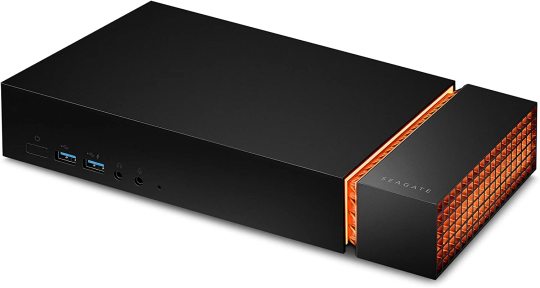
View On WordPress
#Built-in Cooling#Data Storage#External Hard Drive#Game Storage#Gaming Accessories#Gaming Gear#Gaming Performance#Gaming Storage#HDD#Mac Compatibility#Multi-Port Hub#NVMe SSD#PlayStation 4 Compatibility#Product Review#Seagate Firecuda Gaming Dock 4TB#Thunderbolt 3#Windows Compatibility#Xbox One Compatibility
2 notes
·
View notes
Text
32GB Mini-ITX Laptop Performance, portability Experiment
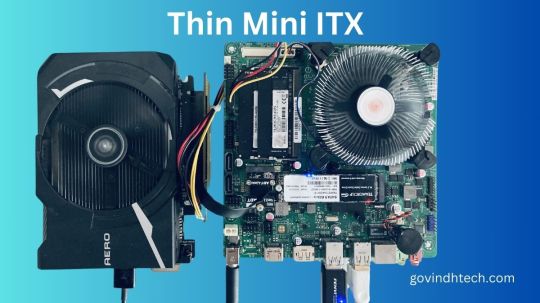
Mini ITX Motherboard
The Mini-ITX board became a laptop with 32GB of RAM and a battery. Because it’s passively cooled, the Mini-ITX laptop has no fan noise. SFF lets you turn a Mini-ITX motherboard into a laptop. Due of its passive cooling, Fanless Tech brought APU-enthusiast’s completed construction project to our attention. Passive cooling uses a heatsink and natural air dissipation, therefore considerable breathing area is recommended.
The construction specs are minimal yet usable for basic computing and light gaming/emulation. A 1TB Muskhin pilot-e NVMe Gen 3 drive is linked to ASRock’s N100DC-ITX board and 32 GB of 3200 MT/s Mushkin Essentials DDR4 RAM.
The Intel N100, included inside the ASRock N100DC-ITX motherboard, has 4 cores and 4 threads of Alder Lake architecture. It uses the Intel UHD graphics engine, which limits it compared to modern Intel iGPUs.
Despite those limitations, it’s astonishing to run all of this on a battery in a bespoke chassis that turns it into a dual-screen laptop. It can simulate Nintendo 3DS games, so is it that bad? Ayaneo Flip DS can replicate Switch in a smaller form factor, but individuals develop these projects for fun, not practicality.
Besides being a working Mini-ITX laptop, the two screens are creative. As shown in the images above and the original gallery, the bottom screen can be utilised as a touchscreen keyboard or to improve emulation/media consumption. Since the design is being demoed with 3DS emulation, the dual-screen option may have been influenced by that workload.
This project achieves all it sets out to, making it hard to criticise. It looks almost clean enough to be a consumer laptop (in a retro-futuristic 90s style), but it won’t perform like a high-end gaming laptop.
Successful projects like this make us wonder how fast a “proper” Mini-ITX laptop project may be with active cooling and newer board/CPU combos like ASRock’s Core i9-capable MITX board. The Mini-ITX laptop proof of concept is here, but such designs may require large external power bricks! Another SFF. Network man used “Thin ITX” too.
A mostly handworked laptop prototype with a thin mini-ITX (hence “thin ITX“) motherboard using a 17.3” display and Li-ion battery.
Since laptops have proprietary motherboards that can’t be replaced, upgrading to current-generation technology usually requires buying a new laptop. You’d also need to alter the keyboard and other parts of a normal laptop.
Framework’s answer is their own motherboard specification, which they hope to support in the future and combines well with their other components for a sleek system.
This is the lightest motherboard standard that supports powerful, socketed hardware and is supported by companies who deliver boards for new chipsets quickly.
Here’s a good introduction to thin ITX, along with forum postings. Intel designated it in 2011 for DIY AIOs. That didn’t take off, but it’s still popular, but it’s aimed at industrial users for embedded applications, making it hard for private persons like me to buy. However, various qualities make it acceptable for this purpose.
Advantages
Half the thickness of tiny ITX + Boards like Mitac PH12ADI and ASRock IMB-1240-WV support socketed desktop CPUs and IGPUs, whereas similar-sized boards feature lesser hardware.
The device provides wide-voltage DC power via a jack and can use laptop power bricks instead of ATX power supplies, making it similar to an integrated Pico PSU.
Internal 4-pin ATX power connector for battery connection + eDP/LVDS connectors for laptop displays� + SODIMM RAM, M.2 WiFi, and storage ports are common laptop interfaces.
Common desktop interfaces for modding include USB 2.0/3.0, audio, PCI-E (up to x16), and several I/O ports.
The drawbacks of lesser VRMs include a limited power draw of “~65 W TDP” (~100 W real), which is nevertheless efficient for laptop use. Priorities for industry may include dual ethernet and stock BIOSes without overclocking or memory customisation, albeit this is comparable to most laptop BIOSes. IGPUs are easier to incorporate than DGPUs due to space constraints, hence AMD doesn’t do well here. Recent releases include the inexpensive ASRock X300TM-ITX, which supports the 5600G/5700G from Q2 2021.
Boards can sometimes deviate from specs. Sometimes “know your motherboard” means having the proper DC jack plug, display, and/or USB header cables. Choosing a single manufacturer (e.g. Mitac or ASRock) simplifies production plans and specs.
Mini-ITX Technical specs
It’s mostly immaterial, however the prototype has a Mitac PH12CMI, i7-10700, 130 W power brick, self-made Sony VTC6 battery pack (4S1P), and N173HGE L21 display.
Windows and Kubuntu 22.04 (LTS) work.
Prototype keyboard is Dell Precision 7510 UK. Only the keyboard switches are wired to a Teensy 4.0 because it’s too much work to connect the backlight, extra mouse buttons, and trackpoint.
Aliexpress sold me a USB touchpad with three independent buttons.
Laptop keyboards and touchpads usually integrate via FPC wires, but USB is easier. The extra power draw is minor .
Making a working laptop out of a Mini-ITX board is a difficult but worthwhile do-it-yourself project. What features and specs to anticipate are as follows:
Qualities:
Extremely customisable: The Mini-ITX board and its parts, so you may adjust performance and features to suit your requirements.
Potentially Portable: Compared to a full desktop PC, it is portable even if it is probably thicker than a business laptop.
Unusual Build Experience: Provides DIY enthusiasts with a fulfilling challenge.
Details (Points to Be Considered):
Processing Power: Low-power processors (APUs) appropriate for simple jobs and light gaming are frequently found on mini-ITX boards. Think of a board that has a GPU integrated in for graphics processing.
Cooling: Because of space restrictions, effective cooling is essential. While active cooling (fans) necessitates careful design for noise and airflow management, passive cooling (heatsinks) may have limitations.
Battery Life: Including a battery increases the amount of work. Due to size constraints, the battery capacity will be smaller than that of commercial laptops.
Screen: Requires a laptop display panel to be connected to the video output of the motherboard.
Keyboard and Trackpad: Requires a thin keyboard and trackpad, which may be custom-built or salvaged from previous computers.
Case: One important component of the project is the chassis. You can alter an existing laptop casing or create a custom case using 3D printing.
All things considered, a Mini-ITX laptop provides a distinctive and adaptable computing experience. But remember the drawbacks when it comes to cooling, battery life, and overall size in comparison to business computers.
Read more on Govindhtech.com
0 notes
Text
Restore of Power

Also on Ko-fi
#nvme ssd#nvme#edited#edit#photo#photography#shot on iphone#ko fi#ko fi support#support#help#krita#picsart#donations#donate
0 notes
Text
Upgrading Your Gaming Rig with the Latest Computer Parts
In the rapidly evolving world of PC gaming, staying ahead of the curve is essential for an immersive and competitive experience. Upgrading your gaming rig with the latest computer parts not only boosts your system’s performance but also ensures that you’re getting the most out of your gaming sessions. This comprehensive guide will walk you through the key components to consider when upgrading…
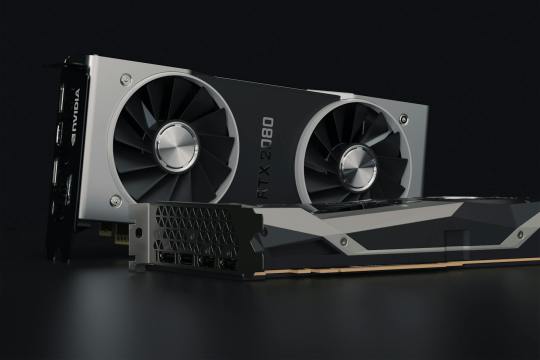
View On WordPress
#cooling systems#CPU upgrades#cutting-edge gaming technology#DIY PC upgrades#energy-efficient PSUs#future-proofing components#gaming experience#gaming rig upgrades#GPU enhancements#high-resolution gaming#immersive gaming setup#latest computer parts#motherboard compatibility#NVMe SSD#PC gaming advancements#PC performance boost#power supply units#professional PC building#quality computer components#RAM optimization#ray tracing#SSD technology#system compatibility#thermal management
1 note
·
View note
Text

Get blazing-fast performance and reliable storage with NVMe SSDs. Explore the best NVMe SSD options in India, including 1TB models, at competitive prices. Upgrade your storage solution today for enhanced speed and efficiency.
0 notes
Link
jenis-jenis SSD berdasarkan form factor, antarmuka, dan jenis chip. Anda juga akan mendapatkan tips cara memilih SSD yang sesuai dengan kebutuhan Anda.
0 notes
Text
激安NVMe SSDのNAND情報が確認できる「Maxio nvme flash id」
Maxio社製コントローラを搭載するNVMe SSDのNAND型フラッシュメモリ情報が確認できる「Maxio nvme flash id(maxio_nvme_fid)」のご紹介です。
Continue reading Untitled

View On WordPress
0 notes
Text
So I got a 1tb nvme "flash drive". It's a best buy refurbished 980 pro nvme in a USB 3.2 enclosure.
To test it I moved a large quantity of files to it. But it was only doing 35MB/s. Weird, it should be insane numbers. So I tried a different set of files from another drive. Also 35MB/s, but stacked with the original. So it's doing 70, but with different sources to the same destination. This eliminates the Samsung drive as the source of the bottleneck
I started a third file transfer. Same performance, but without affecting the other two. Fourth file transfer did the same. Two of these transfers are from the same drive. As in, two file transfers from Drive S were moving to the new Drive A were going at 35MB/s. Each. This eliminates my current drives as the source of the bottleneck.
In theory they should be going as fast as they can, but if you do two file copies it'll go one "35MB/s" transfer. What's with the weird limit? The throttle seems artificial rather than performance based but I can't find anything online for what could be slowing me down.
Task manager showed the new Drive was performing at 45% capacity during the peak of my test. So it can, in theory, take on 8 independent file transfers. I'm better off making 8 (smaller) concurrent operations rather than waiting for one larger one that should just go 8x faster.
My desire to make this go faster is met with my lack of need. I never need to move 1TB of data as fast as I can, but why isn't it OPTIMIZED >:(
0 notes
Video
youtube
My SSD Broke, and I Lost My Data....
1 note
·
View note
Text
forgot to post these

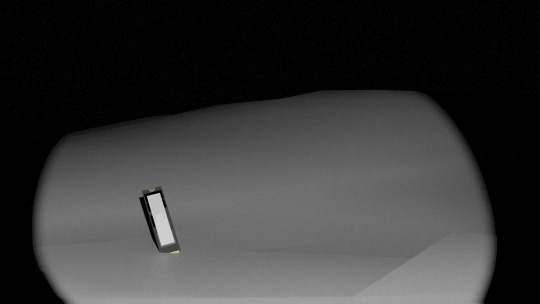
with & without text
1 note
·
View note
Text
My NVMe Needs - Part 4: Another Trial & Error (w/ my paper dolls) [Recorded on Apr 21st, 2023]
So, here’s Part 4 of “My NVMe Needs“ (featuring my paper dolls). 😁 Actually, this is Part 2 of 2 videos that I've recorded, yesterday (April 21st, 2023).
For this continuation, I'm attempting another try & hopefully will succeed in the migration. Plus, I'll reveal the benchmarks using helpful software (which, I won't mention the name until the end). No, not the "Samsung Magician"; not yet though, I'll save it, but rather something else. You'll see. 😉
If you haven't seen my previous part & other ones (that related), then I'll provide some links down below: ↓
• Part 1: Samsung SSD 970 EVO Plus NVMe M.2 SSD (1TB) Review [Apr 7th, 2023]
• Part 2: Thermalright M.2 2280 Pro Review [Apr 11th, 2023]
*• Part 3: Installation and trial & error [Recorded on Apr 21st, 2023] (published: Apr 22nd, 2023)*
So, without further ado, let's continue we left of:
✋ HOLD IT! (AGAIN!)✋
• Okay so before I discuss my experience, let's discuss my recording process. I have 17 recorded videos 🎦📲on my smartphone (the Honor 8C), one of which is from the VLC media player 🎦🖥️. However, squeezing 17 videos in one package wouldn't fit in my (Tumblr) post 😕, so I decided to slice it in half to make a minimum of 500 MB per video post 🪓, not to mention, the adjustments, speeding up the process, and adding subtitles. 🎦✏️🖥️ And thus, I made two videos. It took 7 hours to finish these videos between 7 PM to 2 AM (Apr 21st to 22nd). And man, I'm all relieved after editing. So much so, I want a take a break after this, but I can't because I want to end my ambitious topic sooner before celebrating my birthday, next month (May 6th). Regardless, at least I'm all done with editing, and all was left is to type in with my thoughts. And uhh, if you see me shirtless, then my apologies for that, I completely forgot to wear a shirt before recording. lol 😅 Plus, it's damn heat season in my country (The Philippines), so it's hard enough to sweat my glands while progressing (, both daylight & night), you know. 🥵☀️ Anyways, let's get over with...
My Recorded & Edited Video (using Filmora 9): (pls watch) ↑ 🎦✏️🖥️
• So, in second attempt, you noticed the total memory size was decreased by 789 bytes than before. Here, I have some photos, right here. ↓ [pls see my 12th & 13th image(s)]

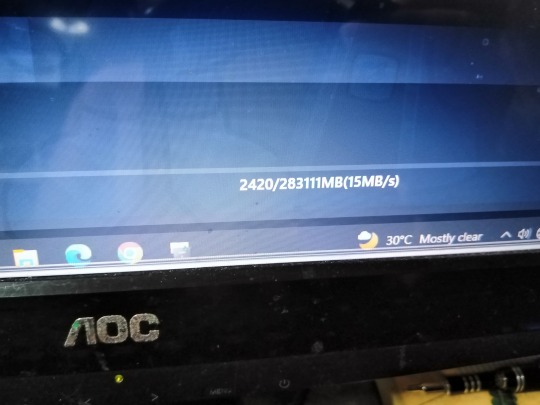
• Sadly, the third attempt was another failure despite the 250+ GB won't handle the migration. And uh, did I mention the writing rate is slow from the physical drive? Yeah, I could see that. However, there's a solution to that. So, let's proceed to these images. ↓ [pls see 14th & 15th image(s)]
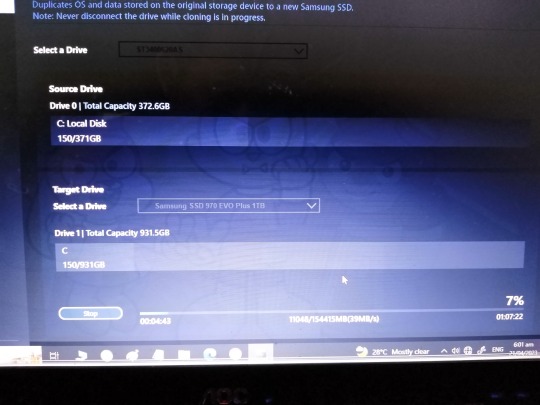

• Alright, third attempt time! And you noticed I reduced the memory size to 150+ GB because I uninstalled larger files/apps. But wait, what are the larger files/apps that I've uninstalled? Well, 2 PC games. One is what I actively played [CLICK ME! #1], while the other is not [CLICK ME! #2] because I suck at playing it. But, is still a great game though (you should check it out at #2). Nonetheless, after it reach 99%, it was a success! And I immediately click the button to shut down the PC! *sigh* Yes! Rejoice!
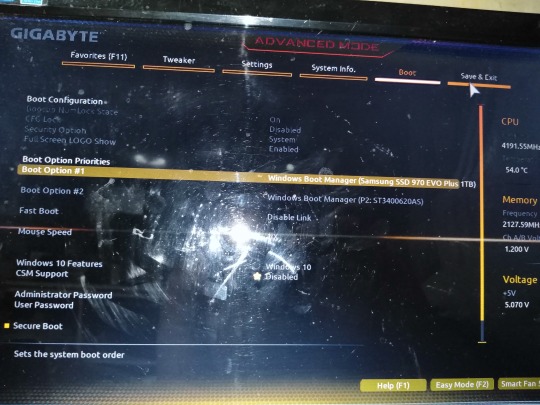

16th & 17th Image(s): ↑
• Next, I turn on the PC once more & press F12 to access the boot menu. There, I swap my old physical drive to my NVMe M.2 drive as my new main boot before I save & click the new main boot from the "Boot Override" list. Then it restarts my PC, but there's a problem... It did not work well! I'm not sure what happened, so I have another round of manual troubleshooting (Round 2). After a couple of minutes, I fire up my PC & it finally worked! It boost very quickly than before until another problem came out to smash my monitor's face, it blacked out! (no pun intended) Round 3 for manual troubleshooting! I'm starting to get frustrated, but I won't give up on my PC. With blood, sweat & tears in my body, my PC has finally worked! And it was worth the hard for me!
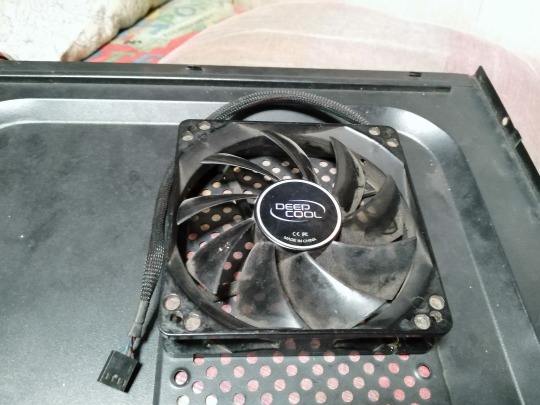
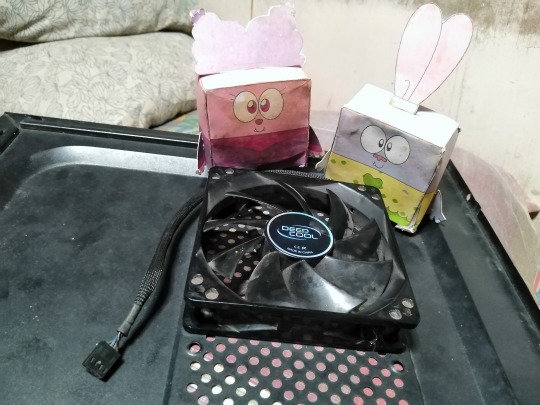
18th & 19th Image(s): ↑
• Now, I was gonna install a leftover cooling fan from a brand called "DeepCool", but I'm having trouble my PC, a couple of times. Installing a cooling fan (whether 4 fans or more) is an essential requirement to keep our internal board (CPU, Graphics Card, NVMe) from overheating for a long period. And it sucks without it. *sigh* But don't worry, I'll be targeting & browsing a new spanking PC tower case, very soon. As well as a brand new power supply, too. My paper dolls approves my idea.

My Benchmarks: ↑
• Let's proceed with another test (that I've promised). This is the so-called "helpful software" that I was talking about. I would like to introduce the "CrystalDiskMark", a read/write memory testing software. Some of you may familiar with it, but others not so much. Nonetheless, these are the four benchmarks that I've tested, including my recent Samsung 970 EVO Plus NVMe, which has the most readable & writable rated speeds of the four memory-based drives, with the bottom right being the least, and that's the Seagate Barracuda 7200 HD. That's the reason why I struggle with playing games or waiting to boot using an old & slow physical drive. Not only that but the multiple windows & tasks that sometimes can't handle. I could relate to that situation though. But thanks to the supreme performance of the NVMe M.2 drives, it can handle pretty much anything, including PC games that are larger files (particularly AAA game titles). However, running large-size PC games means overheating the NVMe's processing unit & other chips, making it stressful on your gaming PC, and that brings it with the introduction of the heat sink for NVMe, which can dissipate the heat & prevent overheating the NVMe's processor & chips. Sure, it may not need it for your NVMe sticks, but we need to keep our memory-based drives & our PC itself top-shaped without any signs of error, not to mention longer period. And that make sense, you know.
Side Note: It said, that the Samsung 970 EVO Plus delivers a sequential read & writes of 3,500 MB/s & 3,300 MB/s respectively. And according to my benchmark test, I would say a solid promise. Even though, the write rate was almost 3,300 MB/s-ish but still a solid promise to me.
Overall:
• I have to say, it was satisfying & a bit frustrating, at the same time. I've shared a lot of mistakes & plenty of undo processes, with a ton of sweaty & face-rubbing from my body because of the dry season, but that doesn't stop me until I'm done. But in the end, I accomplished the installation of the SSD NVMe M.2 drive with my first owned NVMe stick from Samsung (970 EVO Plus) & the heat sink by Thermalright. Hopefully, these two we're safe & sound, forever without second thoughts about removing them. But, should I buy another NVMe with additional items to operate? Maybe. If I buy another NVMe M.2 drive, then I could use it for my file storage instead of the mechanical counterpart. But Nah, I guess one NVMe stick is good enough for me (I suppose). One thing I'm concerned about is not touching any internal components when I try to install a cooling fan or a heat sink with another NVMe stick on it because if I do with a slight touch my PC won't run at all, and that scares me... *sigh* But in the end, it was a worth it & satisfied my computer upgrade. My ambitious computer upgrade was a success!
I have more tests to come until the end, so I'll be planning to make another part for the finale (before my birthday countdown starts), so stay tuned.
Well, that's all for now.
Tagged: @lordromulus90, @bryan360, @carmenramcat, @leapant, @paektu, @rafacaz4lisam2k4, @alexander1301
#My Record Video#MyVideo#My Video#Edit#Edited#My Photos#My Photo#MyPhotos#MyPhoto#Chowder#Panini#Chowder Panini#Paper Dolls#NVMe#NVMe SSD#Samsung#Samsung 970 EVO Plus#Samsung 970 EVO Plus NVMe SSD#M.2 Drive#M2 Drive#NVMe M.2 PCIE SSD#NVMe M2 PCIE SSD#Memory Drive#Windows 10#Personal Computer#Photography
5 notes
·
View notes
Text
NVMe M2 diskler, yüksek hızlı veri aktarımı sağlayan bir depolama teknolojisidir. NVMe (Non-Volatile Memory Express), PCI Express (PCIe) arabirimini kullanarak daha hızlı veri iletim hızlarına ulaşmayı mümkün kılan bir protokoldür. M2 ise, disklerin fiziksel form faktörünü tanımlayan bir terimdir.
0 notes
Text
The GPU performance of the Vector GP68 HX and Vector GP78 HX
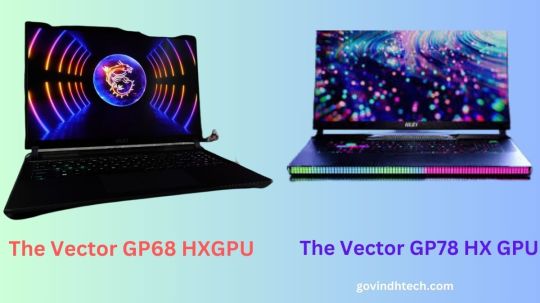
The Vector GP68 HX FULL POWER GPU performance
No matter the category, whether it’s Street Fighter, King of Fighters, the Diablo series, or even racing games, choosing a character in a game may be challenging. The similar thing occurs while choosing a gaming laptop.
Strong movements or talents are obviously the most important factor when choosing one. When it comes to computers, a gaming laptop’s performance is its super move, and that’s what you want.
How does it function? Tested are three video games: Cyberpunk 2077, Forza Horizon 5, and Diablo IV. The performance of the new Vector GP68 HX gaming laptop outperforms that of earlier generations of gaming laptops whose GPUs lacked full power GPU settings since it uses the most recent hardware, an innovative cooling system from MSI, and new DLSS AI technology.
MSI uses their own MSI OverBoost Ultra technology to improve performance. The GPU can regularly function at its maximum capacity of 175 watts while the CPU is constrained to 75 watts, resulting in a combined power use of 250 watts when both the CPU and GPU are fully loaded with demanding gaming software. All 8 of the high-performance P-cores can sustain a clock speed of 5.2 GHz even in situations when the program only depends on the CPU!
It’s crucial to supplement the Vector GP68 HX’s GPU power with additional appropriate components in order to completely unlock and experience the maximum potential of this device. The GPU is used by games to compute a variety of things, including bullet trajectory, item degradation, water dynamics, wind physics, and pretty much the whole in-game world’s mechanics. Together, the DDR5 memory and NVMe SSD store all the crucial data, drastically lowering loading times. Additionally, the MUX switch architecture allows the GPU to transition from an indirect connection to a direct one with the display, resulting in an observable increase in gaming frame rates.
The thermal module, which lowers the temperature of the GPU and CPU via heat pipes, is one of the most crucial components. The MSI Cooler Boost 5 system has six.
The display panel acts as the only window through which you can see this game environment, and the FULL POWER GPU transforms it into a physical reality. As a result, the quality of the gaming experience depends on the screen’s accurate color representation and refresh rate. Smooth images are provided by the Vector GP68 HX’s high refresh rate display, which operates at 240 Hz and has a 16:10 aspect ratio. In addition, it accomplishes a 100% DCI-P3 color gamut, replicating the color integrity observed in professional studio environments. Alternate display choices are also available for the 12th-generation Vector GP67 HX model.
With the cutting edge Vector GP68 HX, you can take your gameplay to new heights. Get ready for a unique gaming experience.
News source:
Witness the performance of the Vector GP78 HX with FULL POWER GPU
Performance is a gaming laptop’s lifeblood, so you should start there. How does it function? Forza Horizon 5, Assassin’s Creed Valhalla, and Diablo IV are the three titles being evaluated. The performance of the new Vector GP78 HX outperforms not only previous generation gaming laptops, but even those whose GPUs are not operating at full power, thanks to the most recent hardware, MSI’s distinctive cooling system, and the new DLSS AI technology.
How is the performance defined? The GPU’s wattage is an obvious indication
The MSI OverBoost Ultra technology is one of MSI’s unique methods for enhancing performance. The GPU may be maintained at its maximum capacity of 175W while the CPU can be kept at 75W, producing a combined 250W of power when both CPU and GPU are fully loaded with games and applications. All 8 of the high-performance P-cores can be kept at 5.2 Ghz if the program just uses the CPU!
You also need additional devices that can match the power of the GPU in order to unleash and enjoy the Vector GP78 HX’s maximal potential. The physics of the wind, water flow, environment damage, how the bullet travels, and essentially how the game’s “universe” functions need GPU computation in games. All the information required to reduce loading times is stored in the DDR5 RAM and NVMe SSD. One more thing: the MUX switch design may change the display’s connection to a direct output from the GPU and increase gaming frame rates.
The thermal module, which cools both the GPU and the CPU, is one of the most crucial components. The MSI Cooler Boost 5 system has six.
The display screen is the lone window into the gaming environment, which is translated into reality by the full-power GPU. Therefore, the visual quality you experience relies on the display’s color realism and refresh rate. A 16:10 high refresh rate display with a 240 Hz aspect ratio is included with the Vector GP78 HX. Additionally, 100% DCI-P3, a studio-level color gamut, has been achieved by its color gamut.
Increase your competitive advantage in games with the innovative Vector GP78 HX. Prepare yourself for brand-new gaming activities.
0 notes
Text
The Power of VPS Servers: Empowering Businesses with Unmatched Flexibility and Performance
In the rapidly evolving digital landscape, businesses of all sizes are increasingly relying on advanced technologies to enhance their online presence. One such technological marvel is the Virtual Private Server (VPS), which offers unparalleled flexibility, control, and performance to meet the diverse needs of modern enterprises. In this article, we will discuss VPS servers in India, and explore their benefits, applications, and why they have become indispensable tools for businesses today.
What is a VPS Server?
A VPS server in India is a virtualized server environment that runs on a physical server, partitioned into multiple virtual instances. Each VPS operates independently, with its dedicated resources, including CPU power, RAM, storage, and bandwidth. This segregation ensures that users have full control over their server environment, without interference from other users sharing the same physical machine.
Enhanced Performance and Scalability:
One of the most significant advantages of VPS servers is their ability to deliver exceptional performance. With dedicated resources allocated to each virtual instance, businesses can experience faster website loading times, reduced latency, and improved overall user experience. Additionally, VPS servers in India offer scalability, allowing businesses to easily upgrade their resources as their needs grow, ensuring seamless performance even during periods of high traffic.
Complete Control and Customization:
Unlike shared hosting plans, where server configurations are limited, VPS servers in India provide complete root access, granting users total control over their server environment. This level of control allows businesses to customize their server settings, install software applications, and optimize their server for specific requirements. The flexibility provided by VPS servers empowers businesses to create tailored solutions, catered to their unique needs.
Enhanced Security:
Security is a paramount concern for businesses operating in the digital realm. VPS servers in India offer enhanced security features that go beyond traditional shared hosting plans. Since each virtual instance is isolated from others, the risk of neighboring accounts compromising the server is significantly reduced. Moreover, businesses can implement additional security measures, such as firewalls, SSL certificates, and regular backups, to fortify their server and protect sensitive data.
Cost-Effective Solution:
VPS servers strike a balance between affordability and performance. While dedicated servers offer unparalleled power, they come with a hefty price tag. On the other hand, shared hosting plans sacrifice performance for cost-effectiveness. VPS servers in India provide a cost-effective solution by offering dedicated resources at a fraction of the price of a dedicated server. This makes VPS servers an ideal choice for small to medium-sized businesses that require robust performance without breaking the bank.
Versatile Applications:
VPS servers find applications across various industries and use cases. They are commonly used for website hosting, allowing businesses to run resource-intensive websites, e-commerce platforms, and content management systems efficiently. VPS servers in India are also popular among developers, providing a sandbox environment to test applications and host multiple websites. Furthermore, VPS servers can be utilized for remote desktop hosting, virtual private networks (VPNs), gaming servers, and more.
Conclusion:
As businesses navigate the dynamic digital landscape, the need for powerful and flexible hosting solutions becomes increasingly crucial. VCCLHosting offer the perfect balance between performance, control, and cost-effectiveness. With dedicated resources, enhanced security, and the ability to customize server settings, businesses can unlock the full potential of their online operations. Whether it's hosting websites, developing applications, or powering critical business functions, VPS servers have emerged as indispensable tool for businesses seeking a competitive edge in the digital realm.
0 notes